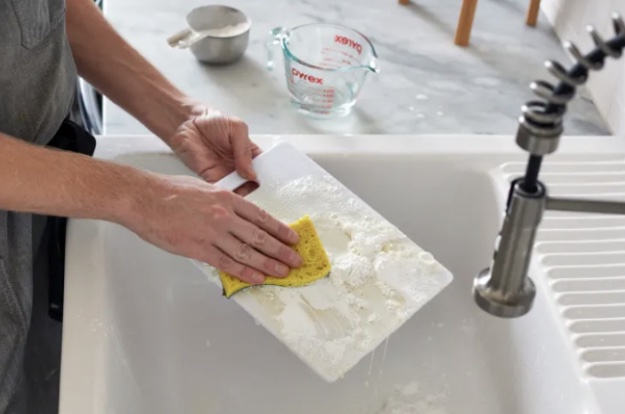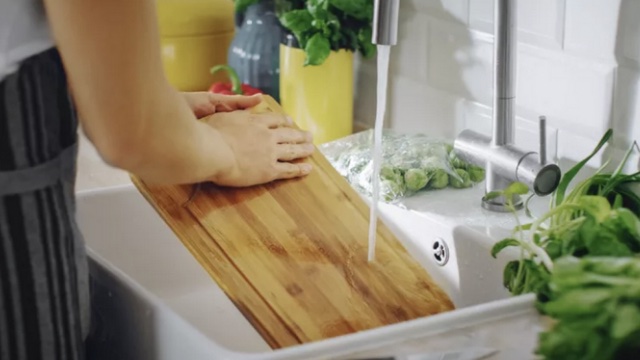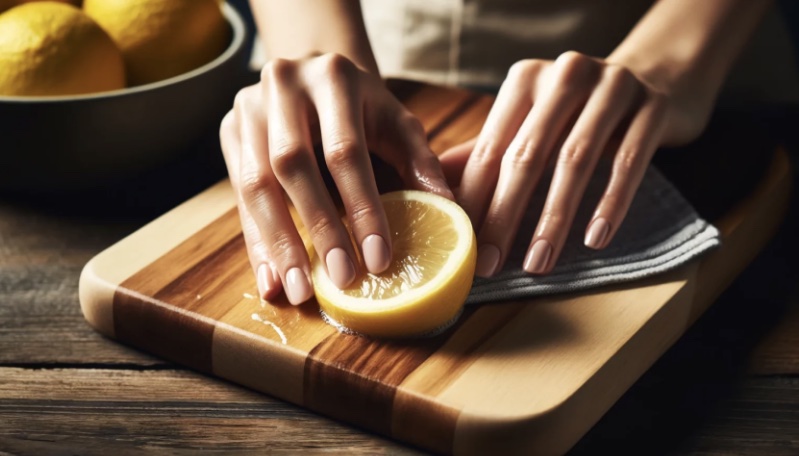It is crucial to always wash a kitchen cutting board properly, to avoid any compromise in kitchen hygiene and food safety. In addition, cleanliness not only removes food debris and discoloration on the board but also prevents cross-contamination with disease-causing organisms regardless of the board material that is being utilized, including but not limited to a plastic, glass, or composite board or even a wooden board. Familiarizing yourself with proper washing and sanitizing methods for cutting boards can make it easier for them to be an effective instrument in your kitchen. Read on to learn how to properly clean and maintain your cutting board depending on its type – it’s a guide to extending your knives and cutting boards’ lifespan, as well as maintaining optimal sanitation when handling food.
For Plastic, Glass, or Composite Cutting Boards
- Wash After Each Use
Regardless of the material used in making the cutting board, it is advisable to wash the board with hot soapy water after each use to eliminate food particles and oils since bacteria love to hide on these surfaces. This is done by scrubbing the parts which are hard to clean with a brush or a sponge thus removing all the tough particles and stains. The goal of this step is to avoid contamination of food by other foods that are prepared in the kitchen to avoid the transmission of deadly diseases. Clean all surfaces and focal points of the cutting board including the middle, corners, and outer rim where liquids can seep and food residue collects. Erecting the board after washing and rinsing it well under hot water can effectively remove the soap and other dirt that may remain on the board. The mold that affects the cutting board can be subsequently removed to achieve further sanitization or for general cleaning based on the cutting board material to ensure the cutting board is clean and is in readiness for the next use.
- Disinfecting
To disinfect, you have a few options:
- Bleach Solution: Dilute 0.5 ml of unscented liquid chlorine bleach and 250 mL of water. splash the surface with this solution, allow it to stand for some time then wash it with hot water.
- Vinegar Solution: It is recommended to amend the above solution having an equal proportion of white vinegar to water to disinfect the board. It is recommended that one let the item soak for a few minutes before washing off the paste.
- Hydrogen Peroxide: Also, remove any wax left on the board, then apply a liberal amount of hydrogen peroxide on the board and allow it to act for a few minutes before washing.
- Drying
This ensures that the board dries well before being put away and that no moisture is left on it. This step is important since condensation occurs and water is formed which if stagnant leads to the formation of bacteria such as mold. Make sure that the board is properly positioned to enable proper drainage so that the moisture evaporates. Also, do not stack the cutting boards when they are wet because this too will just lock up moisture and encourage the growth of bacteria. Using the right method provides cutting boards with lasting hygiene and makes them last longer.
For Wooden Cutting Boards
- Cleaning
Another maintenance that has to be done constantly to the board is washing the board with hot water and soap after its use. Almost any rough surface will do but again, make sure to clean it by washing it with a sponge or a cloth and to make sure that you remove all the food particles and residues that are present on the surface. The short cleaning exercise assists in countering the growth of bacteria on instruments and discourages cross-instrument contamination. One should focus on the grooves or knife marks which may harbor bacteria of all kinds there. Washing with hot water removes all the soap and other residues thereby ensuring that the board surface is clean for further use or for sanitizing where necessary before air drying.
- Disinfecting
https://sakutoknives.co.uk/
One tip to remember is not to use bleach on wooden boards since it can harm the wood. However, when it comes to the use of solutions designed to kill germs, choose between using vinegar and hydrogen peroxide. If necessary, take a solution of 1:1 white vinegar and water and apply or pour hydrogen peroxide with a view of spread on the ballpoint board. Allow the solution to remain in place for several minutes to maximize its bacterial-killing (germicidal) effect. Next, they add a disinfecting solution and let it act for some time before washing the board with hot water. The method described above is one of the safest ways to clean and disinfect wooden cuttings board without causing damage to the surface of the wooden board.
- Oiling (Optional)
Remember to moisten the wooden cutting board with food-grade mineral oil or cutting board oil from time to time to keep the board in good shape and stop it from drying or cracking. Massage it lightly to the skin and let it sink all night; the next morning wash off skin using warm water with a damp cloth.
- Drying
This is similar to how plastic cutting boards are used, let wooden cutting boards air dry before putting them in an upright position in a plastic basket that has been kept open.
General Tips
- Avoid Dishwashers: If a cutting board was not purchased with a dishwasher-safe label, it should not be also washed because it can warp or crack.
- Separate Boards for Different Foods: You should always wash up your chopping boards to avoid cross-contamination, the best way to do this would be to have different cutting boards for your raw meats, poultry, and seafood on one hand and your vegetables on the other.
- Replace when Necessary: Change cutting boards when they are very old and cannot be cleaned well due to large cracks or grooves.
Conclusion
It is crucial to understand how you need to clean your cutting board appropriately to keep the kitchen and, indeed, your food safe. To clean the board after use, wash with hot water and soap and use a sponge or cloth to ease the removal of the remaining food particles. Rinse the board well then let it dry without stacking as this is bad for the board when they are wet. For wooden boards, it is recommended to use vinegar or hydrogen peroxide solutions for cleaning but be careful since they are also agents with varying degrees of chemical strength that could harm the items on the wooden boards. If you ever find yourself in the middle of a thorough cleanup, then just follow these steps to ensure that your cutting board is clean, safe, and ready to be used for anything in the kitchen.





